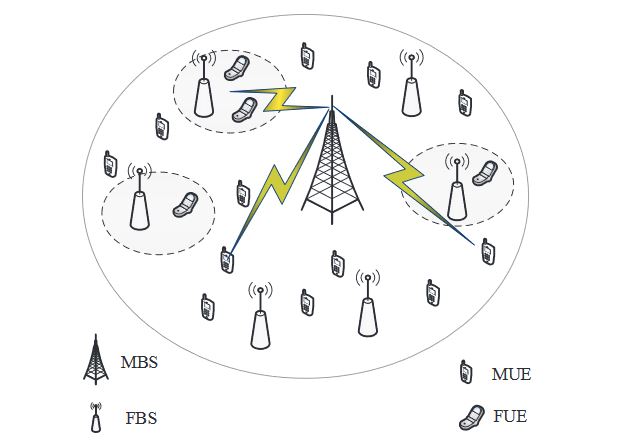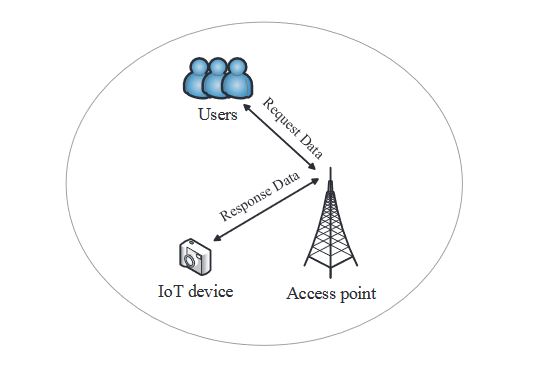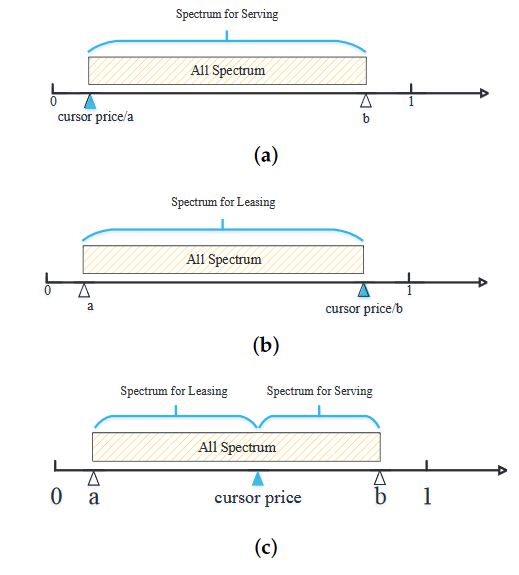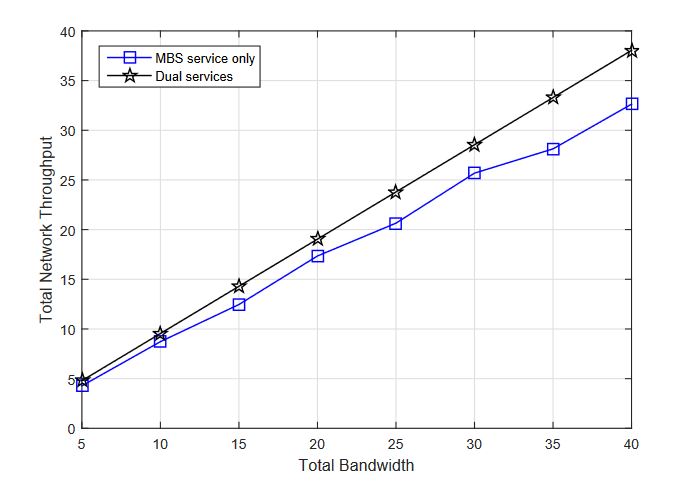ABSTRACT
The Internet of Things (IoT) is a vision of the upcoming society. It can provide pervasive communication between two or more entities using 4G-LTE (Long Term Evolution) communication technology. In 4G-LTE networks, there are two important problems: helping manage the spectrum demands of IoT devices and achieving much more revenue with the limited resource. This paper proposes a pricing framework to investigate the spectrum leasing in mobile heterogeneous networks with single macrocell and multiple femtocells. We modeled the leasing procedure between the macrocell service provider (MSP) and femtocell holders (FHs) as an auction to motivate the MSP to lease its spectrum resource. All FHs act as the bidders, and the monopolist MSP acts as the auctioneer.
In the auction, FHs submit their bids to rent the spectrum resource so that they can make a profit by selling it to their subscribers. The MSP determines the spectrum leasing amount and chooses the winning FHs by solving the dynamic programming-based 0–1 knapsack problem. In our proposed framework, we focus on the spectrum pricing strategy and revenue maximization of the MSP. The simulation results show that the proposed scheme provides effective motivation for the MSP to lease the spectrum to FHs, and both the MSP and FHs can benefit from spectrum leasing.
RELATED WORK
Many academic researchers are committed to the research of related issues in the femtocell domain. Most previous works on femtocells focused on the resource allocation issue. The authors considered imperfect channel state information in the resource allocation of cognitive networks, which is more reasonable in realistic scenarios. In different resource allocation schemes were proposed to maximize the capacity of the system under the interference constraint. The difference is that we considered the economic factor in the proposed spectrum allocation scheme.
SYSTEM MODEL

Figure 1. Two-tier macro-femto networks architecture
The MSP is the spectrum license holder who owns all of the available spectrum in the networks. It is assumed that the MBS sells spectrum resources to its MUEs with a unified price. However, the FHs own no spectrum and have to rent spectrum from the MSP according to the price charged by the MSP when they want to serve their subscribers, i.e., femtocell UEs (FUEs), for making a profit. In our scenario, all MUEs are assumed to be uniformly distributed inside the cell site. The MBS owns a total W Hz wireless spectrum bandwidth to provide macrocell data access service, where each MUE is allocated part of the bandwidth by purchasing from MBS. Figure 1 presents the two-tier macro-femto network architecture. As shown in Figure 1, there are K FBSs and L MUEs within the coverage of the MBS.

Figure 3. IoT scenario of spectrum leasing
To illustrate the applicability of our proposed spectrum sharing approach in the IoT scenario, we consider an IoT device that can be allocated to serve an online user, for example a camera, as mentioned. As shown in Figure 3, there are some online users who request to control the device. After the device receives the requested data, it firstly determines which user obtains the right of control, and then, it will transmit the result to an access point; and the access point will forward the data to those users subsequently. Finally, the connection between the winning user and the device will be established. In this process, as a spectrum user, the IoT device has to pay for using spectrum resources. Additionally, the cost will be on the basis of the charges to provide service for the winning user. Therefore, the proposed scheme can be used in the IoT scenario.
AUCTION FORMULATION

Figure 4. The acceptable service price range for a user equipment (UE) with θ
For a certain UE with spectrum efficiency θ, the acceptable service price range is shown as Figure 4. On the one hand, a higher θ means that the UE can accept a higher service price, which may bring more revenue for the wireless service provider. On the other hand, the wireless service provider can announce a high service price to filter those UEs with low spectrum efficiency.
AUCTION-BASED SPECTRUM LEASING PROTOCOL

Figure 5. Three options for MBS: the effect of service price on spectrum allocation
In this section, we will discuss the spectrum leasing protocol. We pointed out three options for the MBS to obtain profit in Section 4.4. In fact, Option 1 and Option 2 are special cases of Option 3. In order to obtain the maximal profit, the MBS has to sell out its spectrum. The effect of macrocell service price on spectrum allocation is shown as Figure 5. There are three important points in the figure, price a, price b and cursor price.
SIMULATION RESULTS

Figure 6. Macrocell service provider (MSP) max revenue versus total bandwidth under different service modes
It can been see that the max revenue of MSP in dual service mode is always greater than the other two modes in the same amount of bandwidth in Figure 6. In the mode of FBS service only, the MSP obtains the lowest revenue by leasing all spectrum resources to FBSs without serving its own MUEs. This is because a part of the whole revenue of the MSP will be split to FHs, which results in decreased profit of the MSP. In the MBS service-only case, the MBS have to tolerate some MUEs with lower spectrum efficiency and make a low service price for them.

Figure 14. Overall network throughput under different service modes
As an important QoS metric, throughput has been evaluated in the model. Additionally, we simulate the overall network throughput under different service modes, as shown in Figure 14. As expected, the throughput of dual service mode is always larger than the MBS service only in the same amount of bandwidth. The reason is that in order to lease spectrum to FBSs, the MBS releases some MUEs with low spectrum efficiency. Therefore, the throughput has been significantly improved, as well as the revenue.
CONCLUSIONS
In this paper, we proposed a pricing framework to investigate the spectrum leasing problem for coexisting MBS and FBSs in mobile macro-femto networks. We model the leasing procedure between the MBS and FBSs as an auction, where all FBSs bid to obtain the spectrum resource, and the MBS determines the spectrum leasing amount and chooses the winner FBSs, which maximizes the utilities of the MBS.
In order to motivate the MBS to sell resources to the FBSs, we designed a pricing strategy to guarantee the optimal revenue of MSP in the monopoly market. This pricing strategy can be achieved by the knapsack algorithm with lower computational complexity. Finally, the simulation results show that the proposed framework provides effective incentive for the MBS to lease spectrum to FBSs, and both the MSP and FHs can achieve higher utility with spectrum leasing. At the same time, the overall network throughput can be improved significantly.
With the progress of 5G networks, more applications with higher performance requirements, such as IoT and e-health, should be supported. It can be seen that the IoT is going to be considered as a meaningful super addition to the mobile Internet, while the QoS differentiation and management complication become the key challenges. To satisfy these requirements, other spectrum pricing models for different types of IoT services will be considered in future work.
Source: Beijing Information Science and Technology University
Authors: Xin Chen | Lei Xing | Tie Qiu | Zhuo Li
>> 200+ IoT Led Projects for Final Year Students
>> More Wireless Mini Projects for Engineering Students